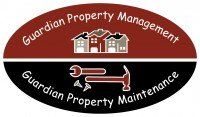Dealing With Ice Dams
Ice dams – a phrase that should strike fear into any Twin Cities property owner’s heart, particularly as fall begins, heralding the return of cold weather. When ice dams form, they create a great annoyance to tenants and are expensive to remove, to say nothing of the cost to repair water damage inside the home. To make matters worse, removing ice dams only treats the symptom. Attempting to treat the root problem requires preventative measures.
Ice dams form when a dense layer of snow accumulates on a sloping roof. The heat coming through the roof from the interior causes the snow to melt. In normal conditions, the meltwater flows to the ground from the eaves and through the gutter. But when the temperature is below freezing, it may not make it that far, instead refreezing further down the roof and in the gutters. The refrozen moisture is now an ice dam.
Once ice dams form, melting snow no longer has anywhere to go – except inside. Trapped behind the ice, it begins to seep inside the roof. Once meltwater has seeped into the nooks and crannies of the roof, it is only a matter of time before it refreezes and expands, loosening shingles. Outside, refreezing moisture will damage gutters and downspouts.
Eventually, when the weather warms, the ice will turn back into water and work itself further into the structure of the building. So long as the ice dam remains and temperatures continue to fluctuate, the trapped water will continue to freeze and melt, causing more damage with each repetition of the cycle.
The Nightmare of Ice Dams
Water forced into the home by ice dams will result in costly damage to ceilings, walls, floors, insulation and wiring. Victims of ice dams report water literally flowing down walls as moisture on the roof melts. Moisture inside also creates the perfect breeding ground for mold, mildew and rot, putting residents at risk for respiratory issues.
Removing ice dams once they have formed is expensive and typically subject to long waits. The most common and effective remediation is to access the gutters and eaves, thaw the ice dams with steamed water, then physically remove them. However, when ice dam conditions exist in the neighborhood, firms providing this service are at a premium. The demand causes their prices to rise into the thousands, and an available contractor may be weeks out. Such was the situation during the winter of 2018 – 2019. While waiting for a contractor, significant water damage is occurring at the property, and residents may be displaced.
It is generally not effective to chip away at the ice dam with a shovel, chisel or other edged tool. This will likely exacerbate the problem by damaging shingles and gutters.
Attempting to use salt to melt ice can cause damage as well. Rock salt used on driveways and sidewalks (sodium chloride) is likely to corrode and stain the roof shingles. Magnesium and potassium chlorides are ineffective at temperatures below 12 degrees Fahrenheit. While calcium chloride is sometimes used on ice dams because it is effective at low temperatures, it can damage wooden gutters.
Stopping Ice Dams Before They Start
Measures that may prevent ice dams will vary by the property’s size, the property’s height, the property’s age, the slope of the roof, the roofing material, if there is an attic, the type of gutters, etc. Solutions may include eliminating ceiling cracks, improving insulation, improving ventilation, installing heating tape or installing a band of metal panels just above the gutters. Each of these options vary in difficulty and cost.
It is important to keep the property’s roof cool. If there is an attic, there should be a thorough inspection of the walls, light fixtures, chimneys and pipes for any cracks or gaps from which warm indoor air can escape. If such cracks or gaps exist, they should be repaired with appropriate materials.
Insulation should be dry, tightly packed and thick enough to stand up to Twin Cities winters, not only in the attic itself but also between the attic and the heated living spaces below. The requirements of local building codes are typically bare minimums and may not offer sufficient protection against ice dams. Home energy experts recommend blown-in fiberglass or cellulose insulation (not hand-placed batts) with an R-value as high as 60.
Insulation needs ventilation in order to function properly. Well-placed roof, wall and soffit vents allow outdoor air to circulate before escaping through the top of the roof, further contributing to keeping its surface cool. Ventilation also prolongs the life of shingles and helps to prevent condensation, which can lead to damp and ineffective insulation.
If the building has no attic, or other circumstances make the suggestions above unfeasible, there are other measures that may prevent ice dams. At times heating tape can be installed in and around the gutters, or a band of metal panels may be installed just above the gutters making it more likely moisture will slide down into the gutters rather than freezing or seeping inside the roofing. It is also important to keep your gutters and downspouts clear of any debris that could encourage meltwater to freeze before it reaches the ground.
Finally, any snow that accumulates on the roof should be removed promptly with a snow rake, broom or plastic shovel. However, if this necessitates climbing onto an ice-slicked roof, it is probably time to call on professionals equipped with safety lines.
For more information, contact Guardian Property Management at 651-287-2011, or visit www.guardianprop.com
Contact Us
Trending Cities
Trending Searches
Trending Searches













